What Sauce Do You Use to Make Beef Curry
This curry house style base curry sauce will get you the results you're looking for!
Visit the kitchen of any busy curry house and you are almost certain to see a large saucepan of curry sauce/gravy simmering away on the stove. This sauce is used as a base for most of the restaurant's curries.
Each restaurant has their own special recipe but they are usually quite similar. The base sauce makes it possible for chefs to cook, plate and serve many different curries quickly and easily.
This smooth base curry sauce is just one of the things that give British Indian restaurant (BIR) style curries their distinctive flavour and texture that is loved by so many.
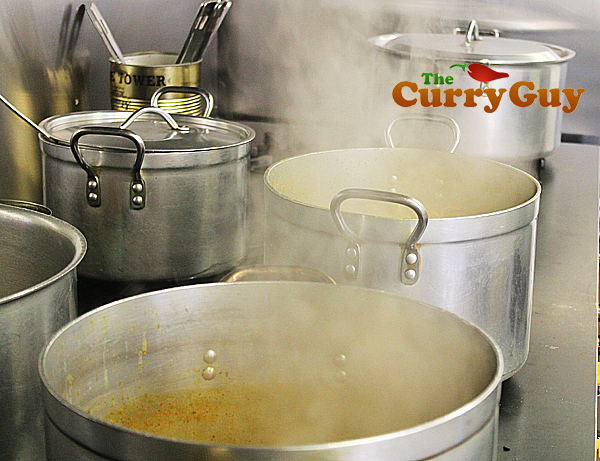
Large batches of curry sauce are made daily at Indian restaurants around the UK.
Why use a base sauce?
The answer to this question is simple. It's the only way you will achieve curry house style curries at home.
Cooking curries in a more authentic Indian style works but the end dish is different. Curry house style curries are famous for their smooth texture which is achieved using the base curry sauce.
How was the base curry sauce developed?
The base sauce was developed over time. Chefs at inexpensive curry houses needed a way of cooking and serving their curries fast, while not losing out on flavour.
Cooking the curries in a more authentic and traditional way just wouldn't be possible in most restaurants as it would be too labour intensive, overly time consuming and not cost effective.
By using this convenient sauce, which is made at restaurants fresh, daily, the chefs can cook a curry in about ten minutes.
That's why you can expect to pay a lot less at a curry house than one of the more upmarket Indian restaurants.
What exactly is the base curry sauce?
I like to describe the base curry sauce as a fancy vegetable stock. It doesn't have a lot of flavour though it does taste good.
Add some chicken, cumin, garam masala, a large heap or two of chili powder, mango chutney and a few other ingredients and you've got yourself a chicken madras.
Keep the chilli powder to a minimum and add some cream, block coconut, rose water and a dusting of cardamom powder and voila… a fragrant chicken korma.
Can I see what the difference is between a curry made with base curry sauce and one made without?
The best way to compare is to make the same curry twice. Make one with the base sauce and make the other using more traditional methods.
Below I have a couple of examples for you.
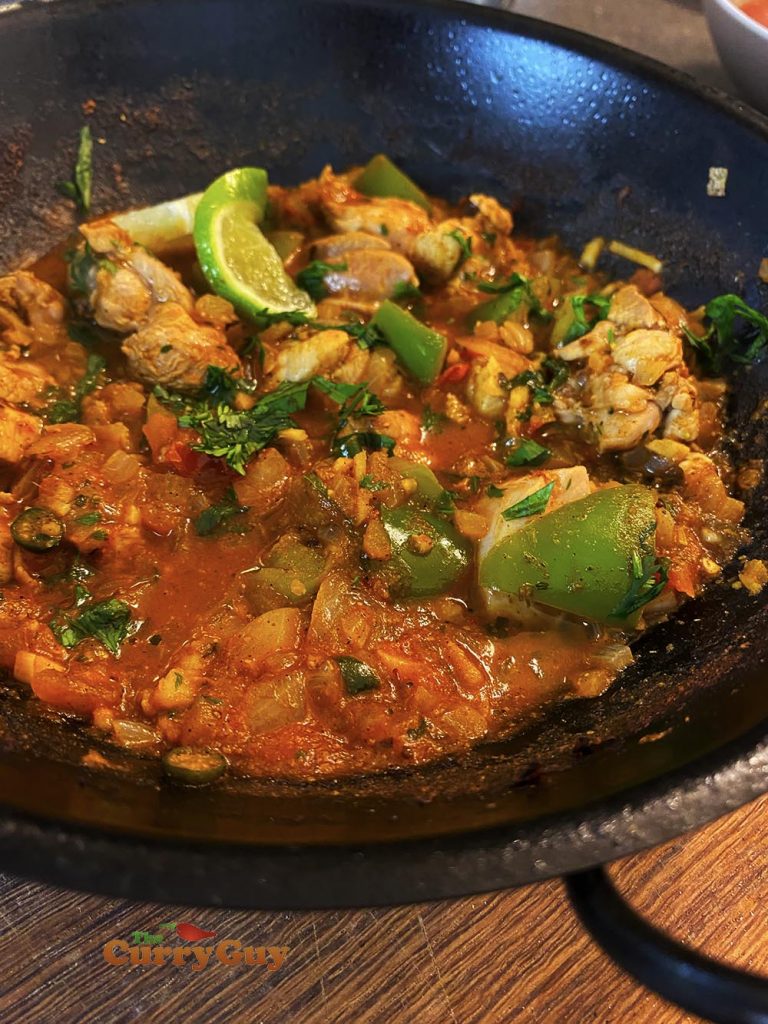
Chicken balti made without base sauce.
The chicken Balti above was made using authentic cooking methods. You can try the recipe here.
It was delicious but a lot different to one made with a base sauce, using what are otherwise the same ingredients.
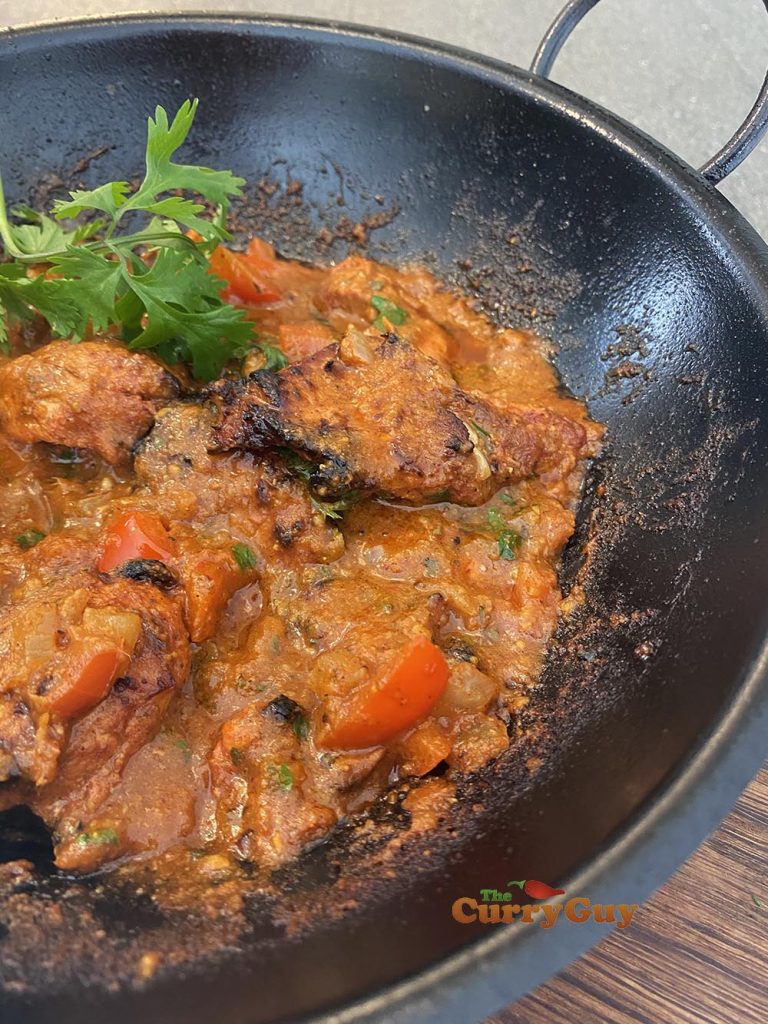
Chicken Balti cooked with base sauce. This is by far my favourite version.
Above is an authentic balti using a base sauce. As you can see, the colour and texture of the sauce are different. I have to say, it tastes a lot better too.
How to store the base curry sauce
Although I do have smaller recipes for base curry sauce, I always recommend making this large batch, just like they do at most curry houses.
The finished base sauce can be stored in the fridge for at least three days and it freezes very well.
When you first blend the sauce. it will be quite thick. This is the best time to portion it out and freeze it.
To use in your curries, however, the sauce needs to be diluted with water or stock until it is quite thin like full fat milk or single cream.
Unlike water or stock, the base sauce cooks down and becomes thick quite quickly when used in a curry. There are so many vegetables in it.
What size containers should I freeze the base sauce in?
That's really up to you and how you wish to use it.
Most of the recipe in my books and on this blog that call for base curry sauce serve 4. These recipe call for anything between 500ml (2 cups) and 700ml (2 3/4 cups) of base sauce. That's the diluted sauce!
So if you want to have enough sauce to cook a curry for four at the ready, I recommend freezing the sauce, before diluting it in portions of 350ml (1 3/4 cups).
That said, I also have a lot of recipes for curry house portions of my recipes on this site. These call for between 250ml and 300ml of base sauce and serve 1 – 2 people.
If you are just going to be cooking for yourself or one other person, you could try them here.
What sort of containers shall I use to freeze the sauce in?
I often use air-tight plastic containers. They are handy and easy.
If you are limited on freezer space, try using freezer bags.
Add the sauce in the amount you wish to a freezer bag and seal it. Then flatten it out. You can then stack them in your freezer to use as needed.
Be sure to heat the base sauce up before using.
You need to defrost and then heat the base sauce up before using in your curries.
You don't want to add cold base sauce to your curries while cooking as it will cool the pan down too much.
Just heat it up in a pan next to where you are cooking your curry and add as required.
The amount of base sauce I used in your recipe was more/less than called for. Why is this?
At busy curry houses, the chef doesn't use exact measures of base sauce.
If the curry is looking too dry, he will add more base sauce.
If it is looking to sauces, he will just cook it down to his preferred consistency.
Please use the suggested measures of base sauce as a guide. They are not in stone as many different things such as the heat of your pan and how many ingredients are in the pan can affect the amount of sauce you will need.
Stay tuned for all the upcoming recipes. Together with this sauce you will be able to create curries better than you'll find at most restaurants. I guarantee it!
Here are a few curry house style recipes you can use this sauce in now!
Try my Chicken Tikka Masala recipe from my cookbook 'The Curry Guy'
Chicken Tikka Masala
Chicken Korma
Chicken Madras
Chicken Dhansak
Lamb Rogan Josh
Lamb Vindaloo
Chicken Chilli Garlic
Chicken Patia
Lamb Bhuna
And here's a popular curry that requires no base sauce…
Butter Chicken
I have now filmed two videos for you to follow. These are slightly different recipes to the one below but they are the recipes featured in my cookbook 'The Curry Guy' which you can order online here.
Of course you could always use my small batch version, but if you really want to achieve that authentic curry house and/or balti house flavour, you've got to go large.
Note: In the photographs below you will find two photos demonstrating adding ghee to this recipe. These are photos from an earlier version of this recipe.
It is done at many restaurants but I no longer add it. It is tasty though. Simply melt 250ml ghee and add about a tsp turmeric as in the photos. Pour this over the sauce and stir it in. This is of course optional but many chefs do it.
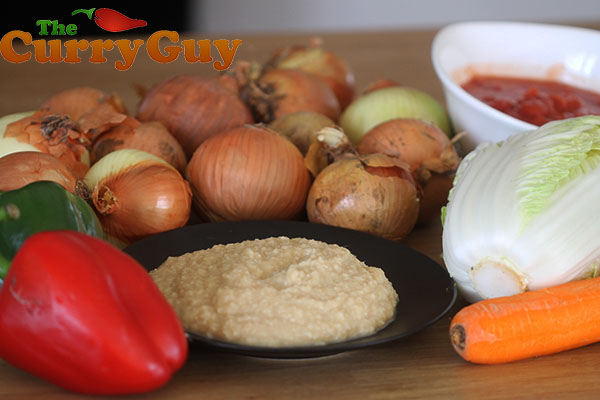
Check out this photo and copy it. Your sauce will be perfect. Only use about half of the cabbage. Any cabbage will do.
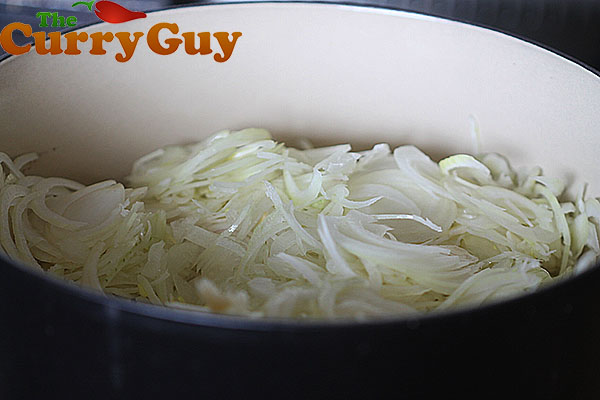
Fry your onions over low heat in the hot oil for about 30 minutes.
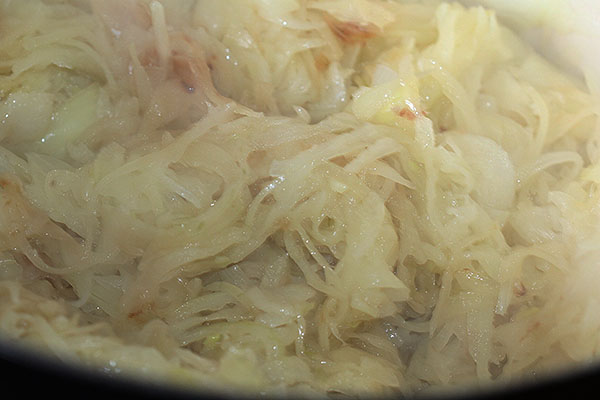
Your onions should look like this when you add the next ingredients.
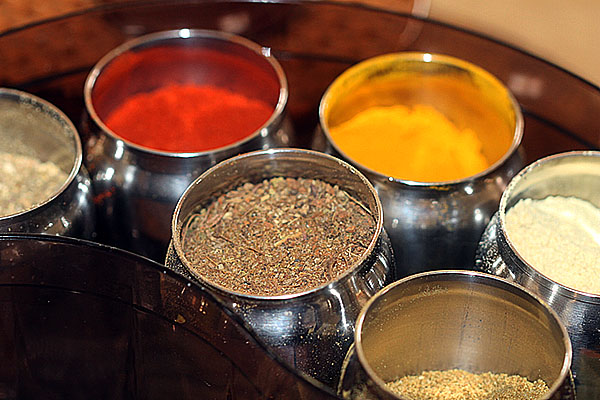
The spices – cumin, coriander, garam masala, fenugreek and turmeric
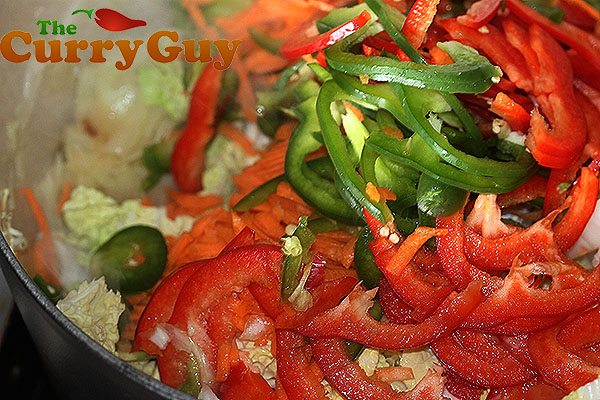
Toss in the rest of your vegetables and stir into the onions.
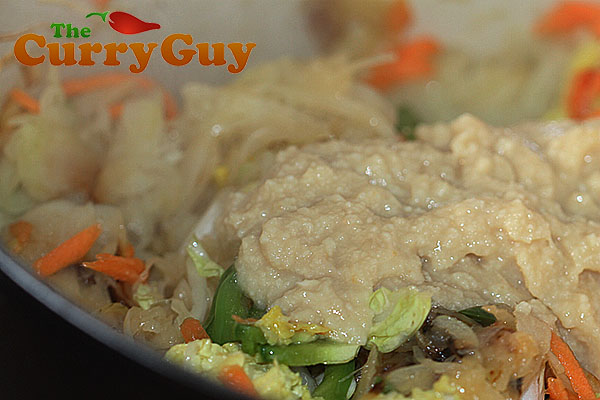
Add the garlic and ginger and stir it in.
Does it matter which order you add the ingredients?
Not really. I tend to add them as you see above so that I can fry the onions first. It is after all an onion base.
Other than that, just throw everything in the pot. That's what they do at busy curry houses.
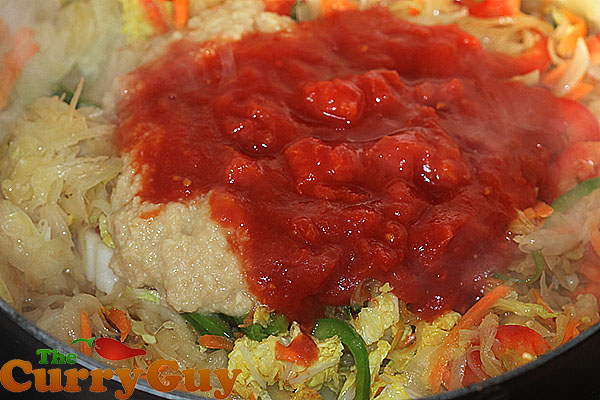
Now stir in the tomatoes
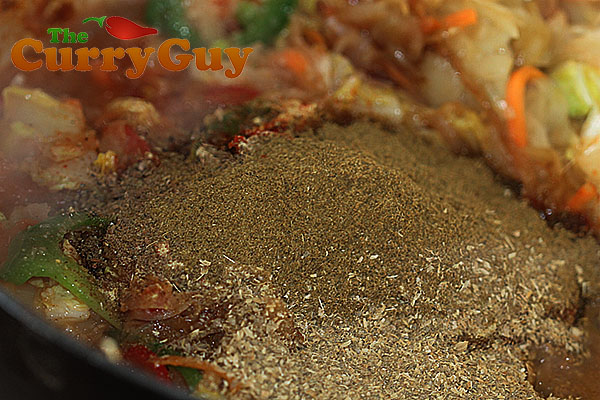
In go the spices except for the turmeric
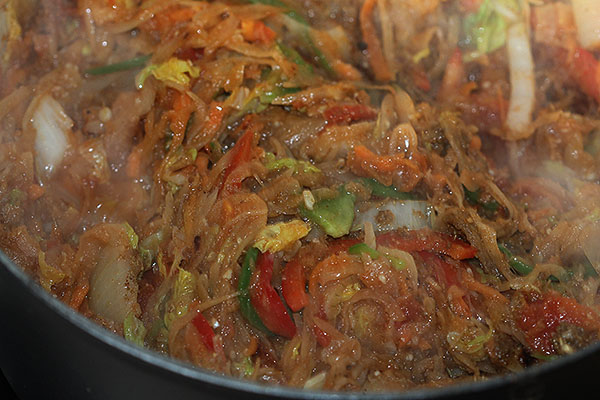
It's coming along just perfectly.
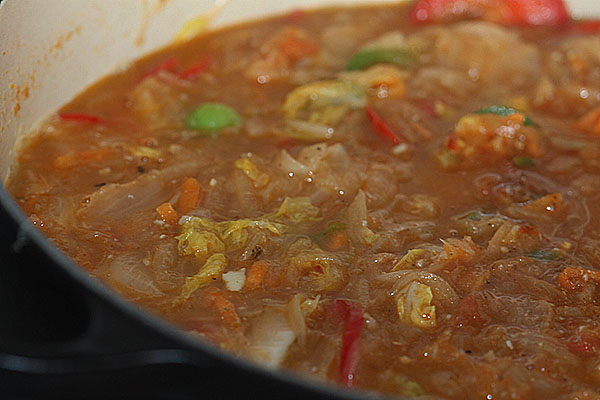
Add enough boiling water to cover and simmer for 20 – 30 minutes.
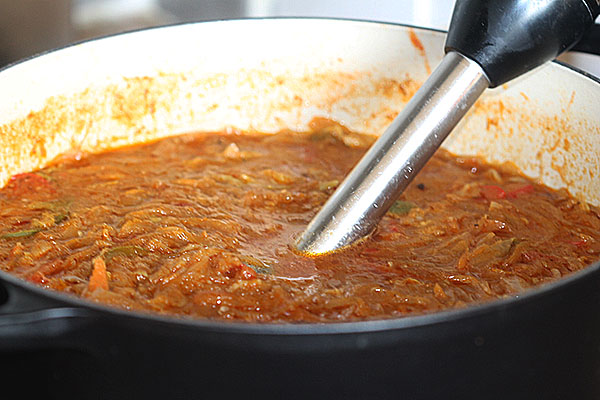
Time to blend.
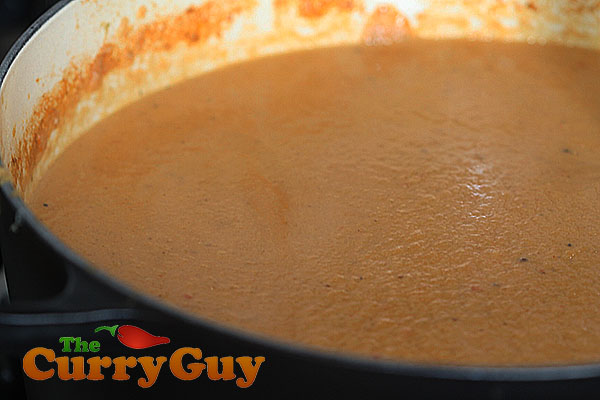
After about three minutes of blending, the base curry sauce should look like this.
How smooth should I blend the sauce?
That depends on what you are using to blend it.
I usually use a hand held blender which takes about three to four minutes to blend until silky smooth. That's what you want.
I have also use a Nutri-bullet which is a lot quicker but you have to transfer all that sauce to it. That can be a bit fussy. Go for a hand held blender if you have one.
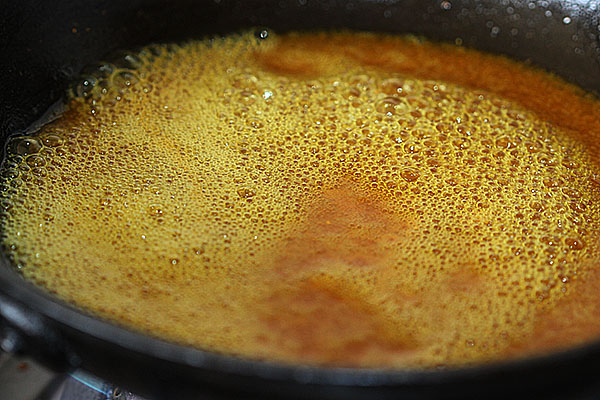
In another pan, melt your ghee and then add the turmeric.
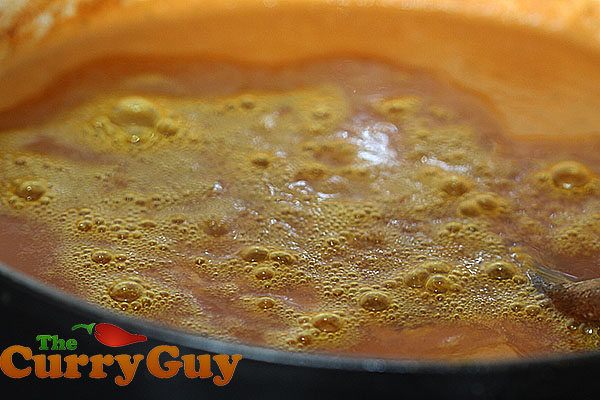
Add the turmeric and ghee to the sauce and stir in.
International & UK Orders

One thing I get asked often is whether or not you have to use a base curry sauce in your curry house style curries. The answer is yes if you want your curries to be just like you get them at your favourite restaurant.
That said, if you just want a good curry and don't have time to whip up a batch of base curry sauce, you could do it the authentic Indian way. Finely chop two to three onions and fry them in about 3 tablespoons of oil.
Fry until the onions are soft and translucent. This should take about five minutes.
Then just follow any of the curry house style recipes on my website and add water, stock or chopped tomatoes to create a sauce. You really can't go wrong. Taste as you go and your curry, though not just like those you find at curry houses will be delicious.
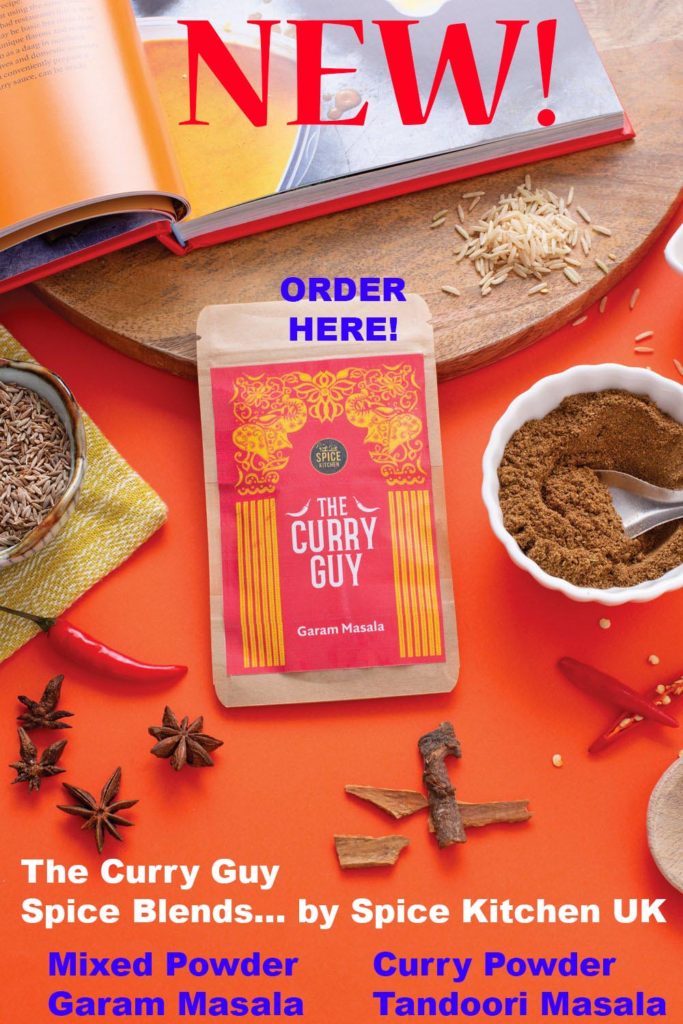
Spice Kitchen UK Supplies Worldwide!
So are you ready to get started?
It takes some time to make but this base curry gravy is so convenient to have on hand!
Prep Time 20 minutes
Cook Time 1 hour
Total Time 1 hour 20 minutes
Ingredients
- 10 large cooking onions – finely sliced
- 250ml vegetable oil
- 9 tablespoons garlic/ginger paste (equal amounts garlic and ginger blended into a paste with a little water.)
- 1 carrot - peeled and chopped
- ¼ head of cabbage - chopped
- 1 red capsicum (bell pepper) - diced
- 1 green capsicum (bell pepper) - diced
- water
- 400ml (14 US fluid ounces ) chopped tomatoes
- 4 tablespoons ghee (clarified butter)
- 1 tablespoon garam masala powder
- 1 tablespoon cumin powder
- 1 tablespoon coriander powder
- 1 tablespoon fenugreek powder
- 1 tablespoon smoked paprika
- 1 tablespoon turmeric
- Salt and pepper to taste (I usually leave this out and simply add it to the final dish)
Instructions
- Pour the oil into a large heavy bottomed saucepan and heat over medium high heat until bubbling.
- Throw in the sliced onions and fry, stirring regularly for about 20 minutes until the onions are soft, lightly browned and translucent.
- Add the capsicums (bell peppers), carrot and cabbage and stir to combine.
- Fry for a further five minutes and then add the ginger and garlic purees and the all of the spices except for the turmeric.
- Now add the tomatoes and just enough water (about 2 cups/ 500ml) to cover the vegetables and simmer for about half an hour.
- After 30 minutes, remove the mixture from the heat and allow to cool slightly.
- Scoop the mixture in batches into a blender and blend until silky smooth. I usually do this for about three minutes per batch. If you have a hand held blender, this stage will be much easier.
- Once your sauce is smooth, melt the ghee in a frying pan. Add the turmeric powder to the ghee. It will darken as it cooks. You want to brown it for about 30 seconds being careful not to burn the turmeric.
- Now add the turmeric/ghee mixture to the sauce and bring to a simmer again.
- Once it is bubbling away, turn down the heat and simmer for a further 20 to 30 minutes
- Use immediately or store in the fridge for up to three days or freeze in 750ml (3 cups) portions for up to three months.
Notes
This base sauce freezes really well. It is great to have on hand for that last minute curry craving.
Source: https://greatcurryrecipes.net/2013/12/31/make-indian-restaurant-style-curry-sauce-large-batch/
0 Response to "What Sauce Do You Use to Make Beef Curry"
Post a Comment